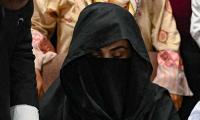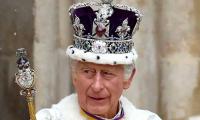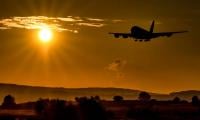BEIRUT: In 10 days, rebels have swiftly advanced from their stronghold in northwestern Syria, seizing dozens of towns and two of the country´s largest cities, leaving President Bashar al-Assad´s hold on power increasingly tenuous.
Government troops abandoned tanks and even warplanes in the face of the advance that reversed years of gains by Assad´s forces. The rebel push comes 13 years after Syria´s civil war began with the government´s crackdown on peaceful democracy protests.
Even before the rebels´ surprise advance, Syria had long been under the influence of various local and foreign forces. Who are the main belligerents and what territory do they control?
- Hayat Tahrir al-Sham -
The rebel alliance is led by Hayat Tahrir al-Sham (HTS), which is rooted in Al-Qaeda´s former Syria branch and based in what had been Syria´s last rebel bastion, the Idlib region.
Beginning their push on November 27, the rebels within four days controlled Syria´s second city Aleppo, the country´s pre-war commercial capital, except for majority Kurdish districts held by Kurdish fighters.
By Thursday, the rebels announced they had taken Hama, the country´s fourth largest city. Syrian Defence Minister Ali Abbas insisted the army had made a “tactical” withdrawal.
Further south, “large reinforcements” from the government arrived in Homs, Syria´s third largest city, a war monitor said, as the army sought to slow the rebel advance there, about 140 kilometres (less than 90 miles) from the seat of power in Damascus.
Fabrice Balanche, a lecturer at the University Lumiere Lyon 2 in France, said HTS now controls 20,000 square kilometres (more than 7,700 square miles) of territory, nearly seven times as much as it did before the offensive started.
- The government -
Early in Syria´s civil war, Assad´s government lost control over much of the country to rebel factions, Kurdish fighters and the Daesh militants.
It gradually clawed back ground with support from Iran and Lebanon´s Hezbollah, while Russia´s intervention with air power in September 2015 changed the tide of the war in Assad´s favour, leaving the government in control of two-thirds of Syria.
Now it holds only the threatened Homs province, the capital and the Mediterranean coast, where Russia has a naval base in Tartus and Hmeimim airbase near the coastal city of Latakia.
Iran says it has deployed only military advisers in Syria at the invitation of Damascus.
- Southern rebels -
In the face of the collapse of government forces, locally based rebels said they had taken control of Daraa province in the south, as well as neighbouring Sweida province.
The army said it was “redeploying and repositioning” in Daraa and Sweida.
Daraa was the cradle of the 2011 uprising which led to Syria´s war, but the province returned to government control in 2018.
Sweida has seen anti-government demonstrations for about 18 months.
The Britain-based Syrian Observatory for Human Rights war monitor said troops were also evacuating posts in Quneitra, near the Golan Heights.
- Kurdish fighters -
In 2012, government forces withdrew from Kurdish-majority areas in Syria´s north and east, paving the way for Kurds to establish self-rule.
They gradually expanded their territory as US-backed Kurdish-led fighters battled Daesh fighters, dislodging the extremists from their last scraps of Syrian territory in 2019.
The Kurds already dominated northeastern Syria and controlled parts of the eastern province of Deir Ezzor province on the left bank of the Euphrates River.
On Friday, they crossed the river and deployed on the right bank of the Euphrates, as government forces and their pro-Iranian allies withdrew from the area.
US troops, who have been in Syria since 2014 as part of an anti-IS coalition, have several bases in Kurdish territory. US troops are also present in the southern desert, at Al-Tanf Garrison near the Jordanian and Iraqi borders.
- Turkey and allied factions -
Turkish forces and their Syrian rebel allies control territory in two strips along the border between Afrin and Ras al-Ain.
In parallel with the rebels´ offensive in Aleppo, pro-Turkey groups took the enclave of Tal Rifaat which the Kurds controlled.
Since 2016, Turkey has carried out successive ground operations against Kurdish forces in Syria.
- Daesh -
Daesh militants proclaimed a “caliphate” across swathes of Syria and neighbouring Iraq in June 2014, instituting a reign of terror. The terrorists were defeated in Syria in 2019 but remnants of the group continue to wage deadly attacks, particularly from desert hideouts, against Kurdish fighters and the army.
Representational image of empty streets and closed shops in central Maputo ahead of a ruling on disputed elections on...
The flag of Serb Republic on a building in East Sarajevo, Bosnia and Herzegovina, January 9, 2023. —...
US President Joe Biden speaks as he visits the Department of Labor for an event honoring the nation's labor history...
Japanese foreign minister Takeshi Iwaya pictured in a Christmas event in Beijing. — AFP/FileBEIJING: Japanese...
A woman shovels snow on the main street during snowstorm in Sarajevo, Bosnia and Herzegovina, December 24, 2024.—...
A firefighter works at the site of residential buildings hit by a Russian drone strike in Kharkiv, Ukraine on December...







